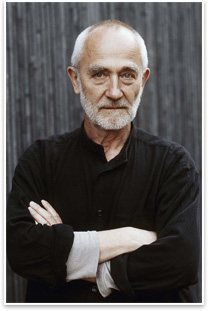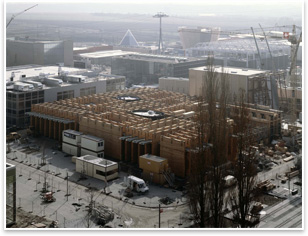
 Peter Zumthor Awarded 2009 Pritzker Prize Peter Zumthor Awarded 2009 Pritzker PrizeSummary: Swiss architect Peter Zumthor, 65, is the 2009 laureate of the Pritzker Architecture Prize, awarded annually by the Hyatt Foundation to a living architect who has made a consistent and significant contribution to the built environment. The award was created in 1979 by Jay A. Pritzker. Zumthor is the 33rd laureate in the competition and will receive the medal and $100,000. The Pritzker Prize will be formally awarded in a ceremony in Buenos Aires on May 29. Zumthor, the man, is known for being reclusive and modest. Zumthor, the architect, is known for being a meticulous craftsman, and at times hands-on in the building of his own designs. His work, most of which is in Switzerland, blends art and craft. He has also designed projects in Germany, Austria, The Netherlands, England, Spain, Norway, Finland, and the United States. His architecture combines a range of natural materials but with a sparse use of form. Zumthor has said he considers architecture to be “handwork.”
Perhaps Zumthor’s most famous work, described as his masterpiece, is the Thermal Baths in Vals, Switzerland, which opened in 1996. Vals, a remote alpine village, commissioned Zumthor in the 1980s to build a thermal bath on a hillside. Zumthor’s cave-like design blends local quartzite, concrete, an underground tunnel, water, light, and steam to define his thermal bath. Zumthor has received praise for many of his projects. His Field Chapel to Saint Nikolaus von der Flüe, in Mechernich, Germany, is a solemn obelisk rising from a field on a farm. Zumthor himself helped build the chapel, alongside the farmer who commissioned it. The interior was made by laying 112 tree trunks together, in a tent-like shape; 24 layers of concrete were then poured around them over 24 days. The trunks were burned, leaving a darkened space of nature. The floor was covered in molten lead to provide the space a sense of contemplative quiet. Zumthor’s Kolumba Art Museum of the Cologne Archdiocese, completed in 2007, in Cologne, Germany, is an enclosed site of minimal brick tying together the ruined walls of a Gothic church, a 1950s chapel, and a 1970s archaeological excavation. The Kolumba Museum has been called “a startling contemporary work, but also one that is completely at ease with its many layers of history.” Other noted work are the Bregenz Art Museum, completed in 1997, a glass and concrete cube in Austria, and the timber Swiss Pavilion for Expo 2000 in Hanover, Germany. A master architect and consummate craftsman Pritzker Prize jury chairman, The Lord Palumbo elaborated with more of the citation: “Zumthor has a keen ability to create places that are much more than a single building. His architecture expresses respect for the primacy of the site, the legacy of a local culture, and the invaluable lessons of architectural history.” He continued: “In Zumthor’s skillful hands, like those of the consummate craftsman, materials from cedar shingles to sandblasted glass are used in a way that celebrates their own unique qualities, all in the service of an architecture of permanence.” |
||
Copyright 2009 The American Institute of Architects. All rights reserved. Home Page |
||
news headlines
practice
business
design
recent related
› The Legacy of Fitch
Photo Captions:
1.Swiss architect Peter Zumthor, 65, is the 2009 laureate of the Pritzker Architecture Prize.
2.Zumthor’s “Swiss Sound Box,” the Swiss Pavilion for the Hanover Expo, 2000, in Hanover, Germany. Photo by Walter Mair.

 Hands-on architect
Hands-on architect